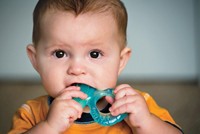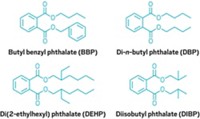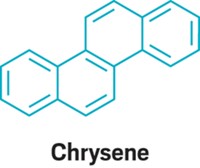Advertisement
Grab your lab coat. Let's get started
Welcome!
Welcome!
Create an account below to get 6 C&EN articles per month, receive newsletters and more - all free.
It seems this is your first time logging in online. Please enter the following information to continue.
As an ACS member you automatically get access to this site. All we need is few more details to create your reading experience.
Not you? Sign in with a different account.
Not you? Sign in with a different account.
ERROR 1
ERROR 1
ERROR 2
ERROR 2
ERROR 2
ERROR 2
ERROR 2
Password and Confirm password must match.
If you have an ACS member number, please enter it here so we can link this account to your membership. (optional)
ERROR 2
ACS values your privacy. By submitting your information, you are gaining access to C&EN and subscribing to our weekly newsletter. We use the information you provide to make your reading experience better, and we will never sell your data to third party members.
Policy
Phthalate Testing Process Set By CPSC
by David J. Hanson
August 15, 2011
| A version of this story appeared in
Volume 89, Issue 33
Under the Consumer Product Safety Improvement Act of 2008, several phthalates used as plasticizers were banned from products intended for children 12 years old and younger. Products have to be tested by a third party to ensure compliance with the law. The Consumer Product Safety Commission (CPSC) has just published the process for laboratories to get approved for testing children’s products for phthalates. Basically, testing labs must use test methods approved by CPSC for phthalates and be accredited by the International Laboratory Accreditation Cooperation–Mutual Recognition Arrangement for these tests. Labs must apply for accreditation to CPSC. The 2008 law bans six phthalates from children’s products—di(2-ethylhexyl) phthalate, dibutyl phthalate, benzyl butyl phthalate, diisononyl phthalate, diisodecyl phthalate, and di-n-octyl phthalate. However, because phthalates are ubiquitous, each of the banned chemicals can be present at concentrations of up to 1,000 ppm.





Join the conversation
Contact the reporter
Submit a Letter to the Editor for publication
Engage with us on Twitter